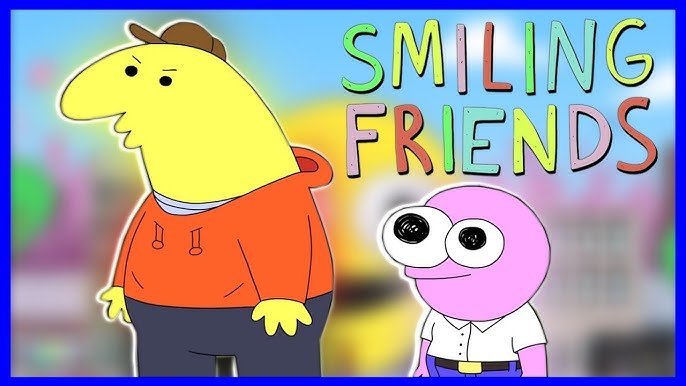Examples of Classical Conditioning: An In-Depth Exploration
Classical conditioning is an essential concept in psychology, and it has shaped much of our understanding of how learning works. When you hear “conditioning,” you might think of science experiments or training pets, but the truth is that classical conditioning plays a significant role in everyday life. Let’s dive into some fascinating examples of classical conditioning and see how it affects our daily experiences, interactions, and behaviors.
What is Classical Conditioning?
Before we look at specific examples of classical conditioning it’s essential to understand what classical conditioning is. Classical conditioning is a type of learning that occurs when a person or an animal links two stimuli together. The Russian scientist Ivan Pavlov first studied this type of conditioning and observed how dogs could be trained to associate a bell with food.
In classical conditioning, a neutral stimulus (something that doesn’t naturally cause a response) is paired with an unconditioned stimulus (something that naturally causes a reaction). Over time, the neutral stimulus becomes a conditioned stimulus, triggering a learned response.
Key Terms to Understand
- Neutral Stimulus (NS): A stimulus that initially does not evoke any significant response.
- Unconditioned Stimulus (UCS): A stimulus that naturally and automatically triggers a response.
- Conditioned Stimulus (CS): A previously neutral stimulus that elicits a response after being associated with the UCS.
- Conditioned Response (CR): A learned response to the conditioned stimulus.
Now that we know the basics let’s explore how classical conditioning appears in different parts of life.
Pavlov’s Experiment: The Start of Classical Conditioning
To truly appreciate the wide range of examples of classical conditioning, we should start with the most famous one—Pavlov’s experiment. Ivan Pavlov, a Russian physiologist, conducted an experiment where he studied the Salivation of dogs in response to food. He noticed that the dogs began to salivate even when they just heard the sound of a bell that was repeatedly paired with food presentation.
- Unconditioned Stimulus (UCS): Food
- Unconditioned Response (UCR): Salivation
- Neutral Stimulus (NS): Bell sound
- Conditioned Stimulus (CS): Bell sound (after being paired with food)
- Conditioned Response (CR): Salivation upon hearing the bell
Pavlov’s dogs learned to associate the bell with food, eventually salivating at the sound alone. This was one of the first examples of classical conditioning that demonstrated how powerful learning through association can be.
Examples of Classical Conditioning in Everyday Life
- Fear of Dogs
One of the most common examples of classical conditioning is developing a fear of dogs. Imagine a young child who has a scary experience involving a barking dog. If that child is frightened by the dog, they may begin to associate the presence of all dogs with the Fear they experienced.
- Unconditioned Stimulus (UCS): The scary barking dog
- Unconditioned Response (UCR): Fear
- Neutral Stimulus (NS): Dogs in general
- Conditioned Stimulus (CS): Dogs in general (after the incident)
- Conditioned Response (CR): Fear at the sight or sound of any dog
- Advertising and Brand Loyalty
Another well-known examples of classical conditioning is in advertising. Advertisers use pleasant music, beautiful people, or fun experiences to create positive emotions around their products. Think about a soda brand commercial featuring a group of friends laughing and having fun at a party.
- Unconditioned Stimulus (UCS): Fun party scene
- Unconditioned Response (UCR): Feeling happy
- Neutral Stimulus (NS): The soda brand
- Conditioned Stimulus (CS): The soda brand (after pairing with the party scene)
- Conditioned Response (CR): Feeling happy whenever you see the soda brand
- Food Aversions
Have you ever eaten something that made you sick, and now you can’t stand the thought of eating it again? This is another of the many examples of classical conditioning When you eat food that causes an upset stomach, you may associate that food with feeling unwell and might avoid it in the future.
- Unconditioned Stimulus (UCS): Bad food causing illness
- Unconditioned Response (UCR): Feeling sick
- Neutral Stimulus (NS): The specific food
- Conditioned Stimulus (CS): The particular food (after illness)
- Conditioned Response (CR): Feeling sick when thinking about or seeing the food
- School Bells and Class Behavior
In schools, ringing the bell is an excellent [example of classical conditioning]. Students learn to associate the sound of the bell with changes in activity, like going to recess or leaving class.
- Unconditioned Stimulus (UCS): Time to change class
- Unconditioned Response (UCR): Standing up and leaving
- Neutral Stimulus (NS): Bell ringing
- Conditioned Stimulus (CS): Bell ringing (after association)
- Conditioned Response (CR): Standing up to leave upon hearing the bell
Classical Conditioning in Animals
- Training Pets
Training pets often involves some examples of classical conditioning. For instance, dogs can be trained to associate the sound of a clicker with treats.
- Unconditioned Stimulus (UCS): Treat
- Unconditioned Response (UCR): Excitement
- Neutral Stimulus (NS): Clicker sound
- Conditioned Stimulus (CS): Clicker sound (after pairing with the treat)
- Conditioned Response (CR): Excitement when hearing the clicker sound
- Horses and Saddles
Horses are often trained using examples of classical conditioning, too. When a horse sees the saddle, it may get excited, as it has learned to associate it with going out for a ride.
- Unconditioned Stimulus (UCS): Going for a ride
- Unconditioned Response (UCR): Excitement
- Neutral Stimulus (NS): Saddle
- Conditioned Stimulus (CS): Saddle (after pairing)
- Conditioned Response (CR): Excitement upon seeing the saddle
How Classical Conditioning Affects Human Emotions
- Anxiety and Dentist Visits
Anxiety about visiting the dentist is another of those well-known examples of classical conditioning. Suppose a person experiences pain during a dental procedure. In that case, they may associate everything related to the dentist—including the smell of the office or the sound of dental tools—with that discomfort.
- Unconditioned Stimulus (UCS): Painful dental procedure
- Unconditioned Response (UCR): Anxiety
- Neutral Stimulus (NS): Sound or smell of the dentist’s office
- Conditioned Stimulus (CS): Sound or smell of the dentist’s office (after association)
- Conditioned Response (CR): Anxiety when experiencing the sound or smell
- Phobias
Phobias can also develop through classical conditioning. For example, a person bitten by a spider may create a fear of spiders.
- Unconditioned Stimulus (UCS): Spider bite
- Unconditioned Response (UCR): Fear or pain
- Neutral Stimulus (NS): Spiders in general
- Conditioned Stimulus (CS): Spiders in general (after the bite)
- Conditioned Response (CR): Fear when seeing a spider
Classical Conditioning in Healthcare
- Medication Effects
Classical conditioning can be used in therapeutic settings in healthcare. Patients may start associating the hospital environment with the positive effects of medication. This can help to boost recovery.
- Unconditioned Stimulus (UCS): Effective medication
- Unconditioned Response (UCR): Relief or feeling better
- Neutral Stimulus (NS): Hospital environment
- Conditioned Stimulus (CS): Hospital environment (after repeated favourable treatment)
- Conditioned Response (CR): Feeling better or reassured in the hospital
- Placebo Effect
Another fascinating [example of classical conditioning] is the placebo effect. If a person believes a pill will make them feel better, and they start feeling better after taking it, their response might be due to classical conditioning.
- Unconditioned Stimulus (UCS): Actual medication
- Unconditioned Response (UCR): Relief from symptoms
- Neutral Stimulus (NS): Sugar pill
- Conditioned Stimulus (CS): Sugar pill (after conditioning)
- Conditioned Response (CR): Feeling better
Classical Conditioning Table Summary
Here is a simple table to summarize a few of the examples of classical conditioning we’ve discussed:
ExampleUnconditioned Stimulus (UCS)Unconditioned Response (UCR)Neutral Stimulus (NS)Conditioned Stimulus (CS)Conditioned Response (CR)
Pavlov’s Dogs Food Salivation Bell sound Bell sound Salivation
Fear of Dogs Barking dog Fear Dogs in general Dogs in general Fear
Advertising and Brand Loyalty Fun party Feeling happy Soda brand Soda brand Feeling happy
Food Aversion Bad food Feeling sick Specific food Specific food Feeling sick
School Bell Time to change class Leaving class Bell ringing Bell ringing Standing to leave
Conclusion: Classical Conditioning in Everyday Life
Classical conditioning is more than just a topic in a psychology textbook—it’s a part of everyday life. From pets eagerly waiting for treats when they hear a click to people avoiding certain foods after a bad experience, the examples of classical conditioning are all around us. Understanding these concepts can help us recognize why we behave the way we do and give us insight into shaping new, positive behaviours.
Classical conditioning shows that our minds are excellent at making associations. At the same time, some conditioned responses might seem unhelpful—like phobias—but others are beneficial, like training animals or teaching children to respond to specific cues. In the end, classical conditioning gives us a powerful tool to understand and influence our behaviours, making it a fundamental aspect of learning and psychology.





Post Comment